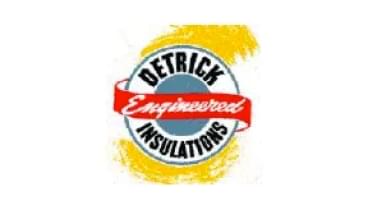M. H. Detrick Company
M.H. Detrick Company made asbestos-containing refractory and insulation materials from the 1930s through the mid-1960s. Asbestos litigation caused the company to file for bankruptcy in 1998. A trust fund was created in 2002 to handle claims.

Why Did M.H. Detrick Use Asbestos?
M.H. Detrick used asbestos because it was heat-resistant, flexible, durable and relatively inexpensive.
M.H. Detrick served a number of industries to provide a wide variety of asbestos-containing suspended refractory construction materials from 1939 to 1964. Few other companies manufactured as many asbestos-containing products as M.H. Detrick.
The company’s asbestos products were supplied in various heat-resistant grades, and the applications were diverse. These products included heat-resistant castings, asbestos cement, coatings, insulating materials and pre-fired brick.
These products were used primarily in the construction of industrial furnaces, ovens and boilers. M.H. Detrick was also a supplier for the U.S. armed forces, which means many veterans were exposed to these asbestos products.
Workers and veterans who developed asbestos-related diseases after working with these products went on to sue the company for compensation to cover medical bills and lost wages.
As of 2022, M.H. Detrick continues to operate out of Frankfurt, Illinois. The company still sells refractory heat enclosures and linings for industrial purposes.
M.H. Detrick Asbestos Trust Now Closed
Asbestos lawsuits eventually caused M.H. Detrick to file for bankruptcy on Jan. 13, 1998.
The M.H. Detrick Asbestos Trust was established with $3 million and began taking claims on Aug. 21, 2002. The trust compensated workers exposed to asbestos products manufactured by M.H. Detrick between 1939 and 1964. The trust’s claim period ended on Feb. 10, 2011, and the trust is now closed.
Anyone who handled their products or worked for the company during its asbestos heyday still may develop serious health issues in the future because of the decades-long latency period between exposure and diagnosis.
Other forms of financial assistance may be available to help compensate these victims.

Gain access to trust funds, grants and other forms of compensation for you or your loved ones.
Get Help NowAsbestos Litigation Involving M.H. Detrick
By the mid-1980s, M.H. Detrick was a target of thousands of asbestos-related lawsuits.
One notable case brought by Wesley Roberts Jr. named M.H. Detrick among 27 defendants. Roberts was a pipefitter from 1941 to 1981 at an Exxon oil refinery in Baton Rouge, Louisiana. He was diagnosed with mesothelioma in 1994 and died a year later. M.H. Detrick was one of 26 companies that settled the claim before it went to court.
M.H. Detrick’s Asbestos Products
M.H. Detrick’s asbestos-containing products included:
- Griptex Mineral Wool Block
- Detrick MW Block Insulation
- MW Insulating Cement
- MHD Finishing Cement
- Detrick T-60 Insulating Cement
- Detrick T-60 Finishing Cement
- Pyroscat Fire Proofing Cement
- Permiseal
- Detroc Asbestos Board
- Hitherm
- Hilite Insulating and Finishing Cement
- M.H. Detrick No. 7 Asbestos Cement
- Asbestolux
- Super 711 Cement
- 7M Asbestos Cement
- Calcrete 30
- Refractory Cement T20 and T22
- Therman Coat
- Utility Thermal Finish Cement
- Utility Insulating Finishing Cement
- Detrick Casing Cement
- Casting Cement T10
- Duriseal Protective Coatings
- Detrick Boiler Wall Coatings
- Monoseal
- Bonding Cement
- Detrick Plastic Insulation
- Fibrous Adhesive
- Insulating Cement
- Asbestos Rope
- Block Insulation
Industries That Used M.H. Detrick Products & Workers at Risk
M.H. Detrick manufactured, used, sold and distributed asbestos-containing products for 26 years, from 1939 through 1964.
M.H. Detrick supplied a number of industries with its asbestos products, including:
- Chemical and refining industries producing calcinated petroleum coke, cement, lime, lead and aluminum
- Metal works industries producing copper and steel
- Glass industries producing float, fiber and container glass
- Industrial production of boilers
- Incineration industries
Occupations most at risk of exposure to M.H. Detrick’s asbestos products include:
- Construction workers
- Industrial workers
- Shipyard workers
- Boiler workers
- Chemical plant workers
- Oil refinery workers
- Metal workers
- Power plant workers
Veterans who worked with M.H. Detrick’s products while serving in the armed forces were at risk of asbestos exposure. Boiler workers stationed on submarines may have faced the highest levels of exposure.
In 2018, a scientific study found significantly higher rates of mesothelioma among Navy veterans who worked as a boiler technician, fireman, machinist’s mate, pipefitter and water tender. Even though these jobs were held by only 20% of the enlisted naval population, veterans with these jobs accounted for 55% of all mesothelioma deaths within that population.
Recommended Reading


